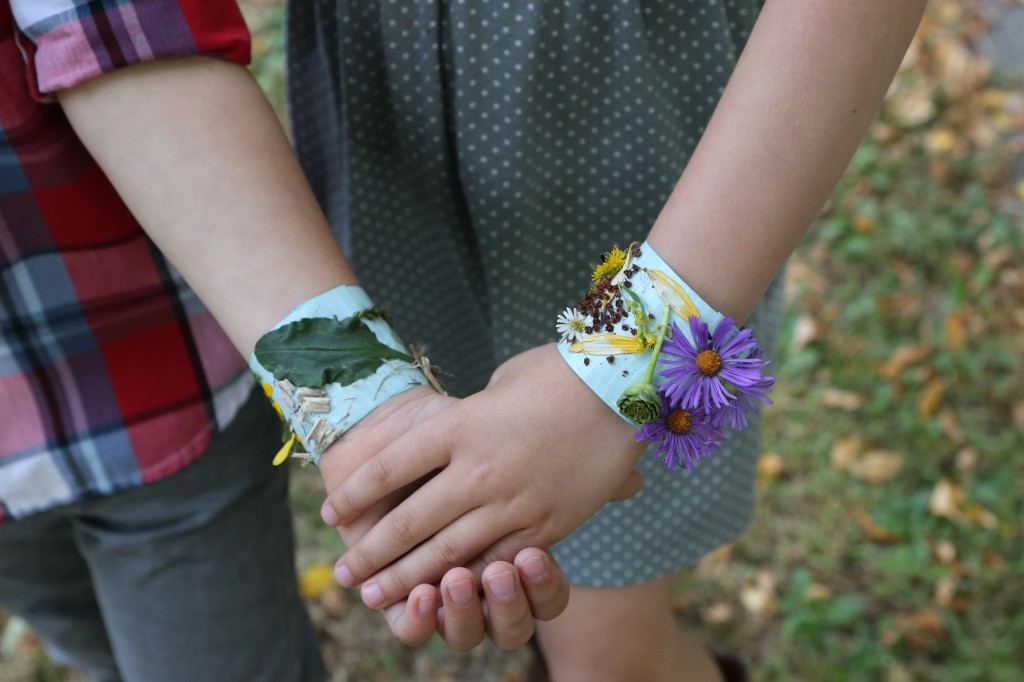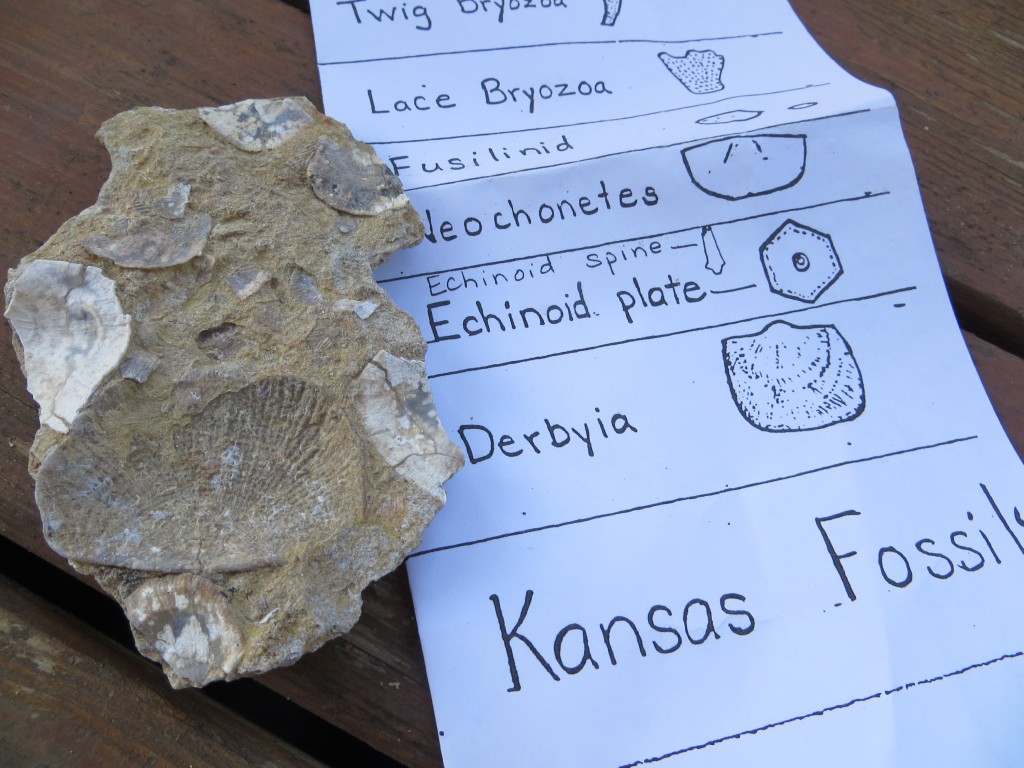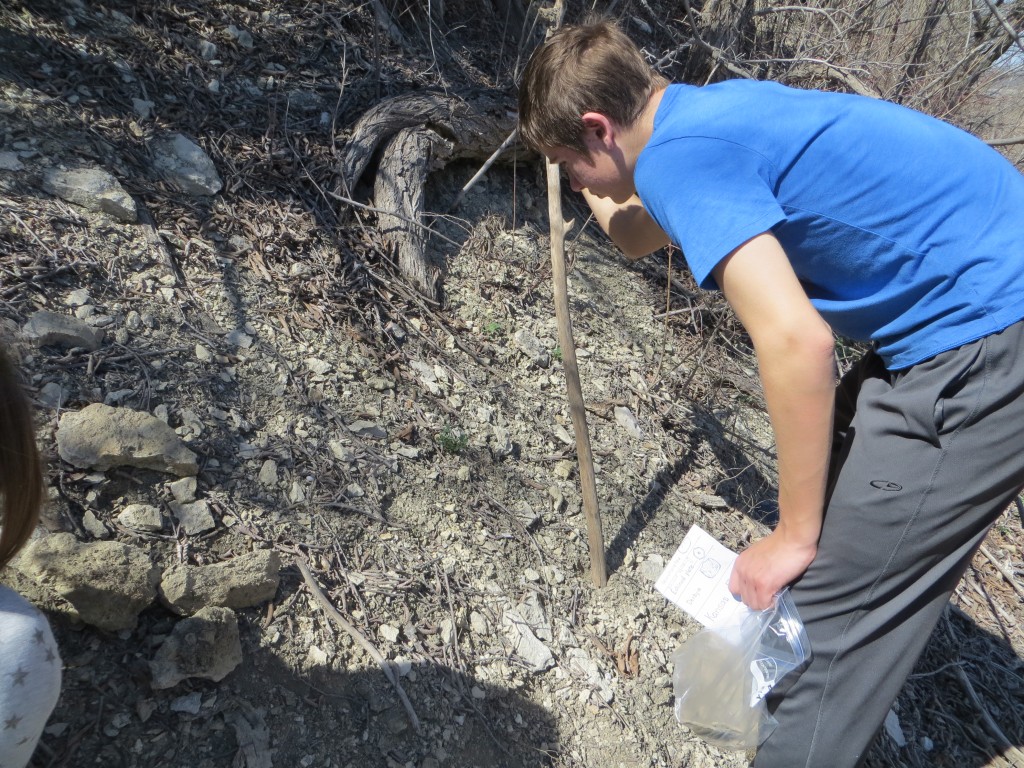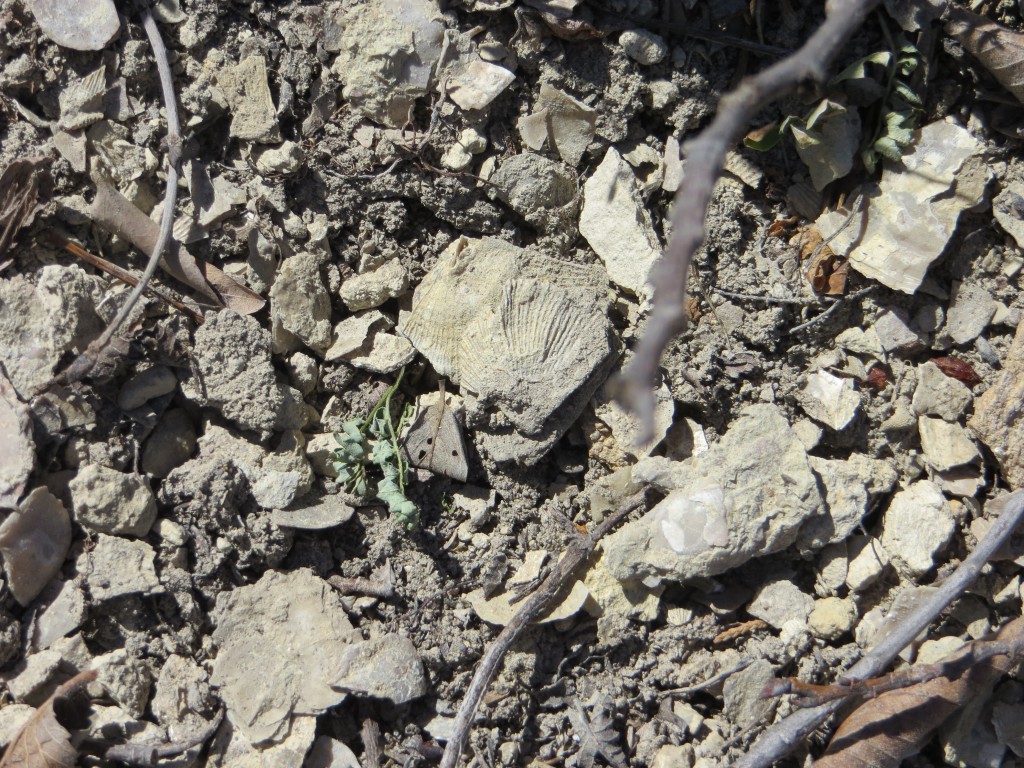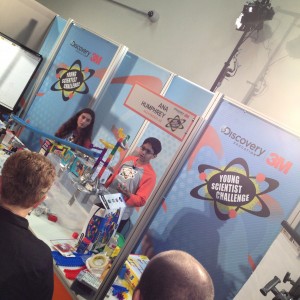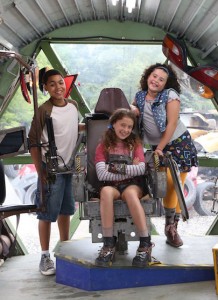Category:The World Around Us’
Ten Environmental Science Projects for Earth Day 2020
- by KitchenPantryScientist
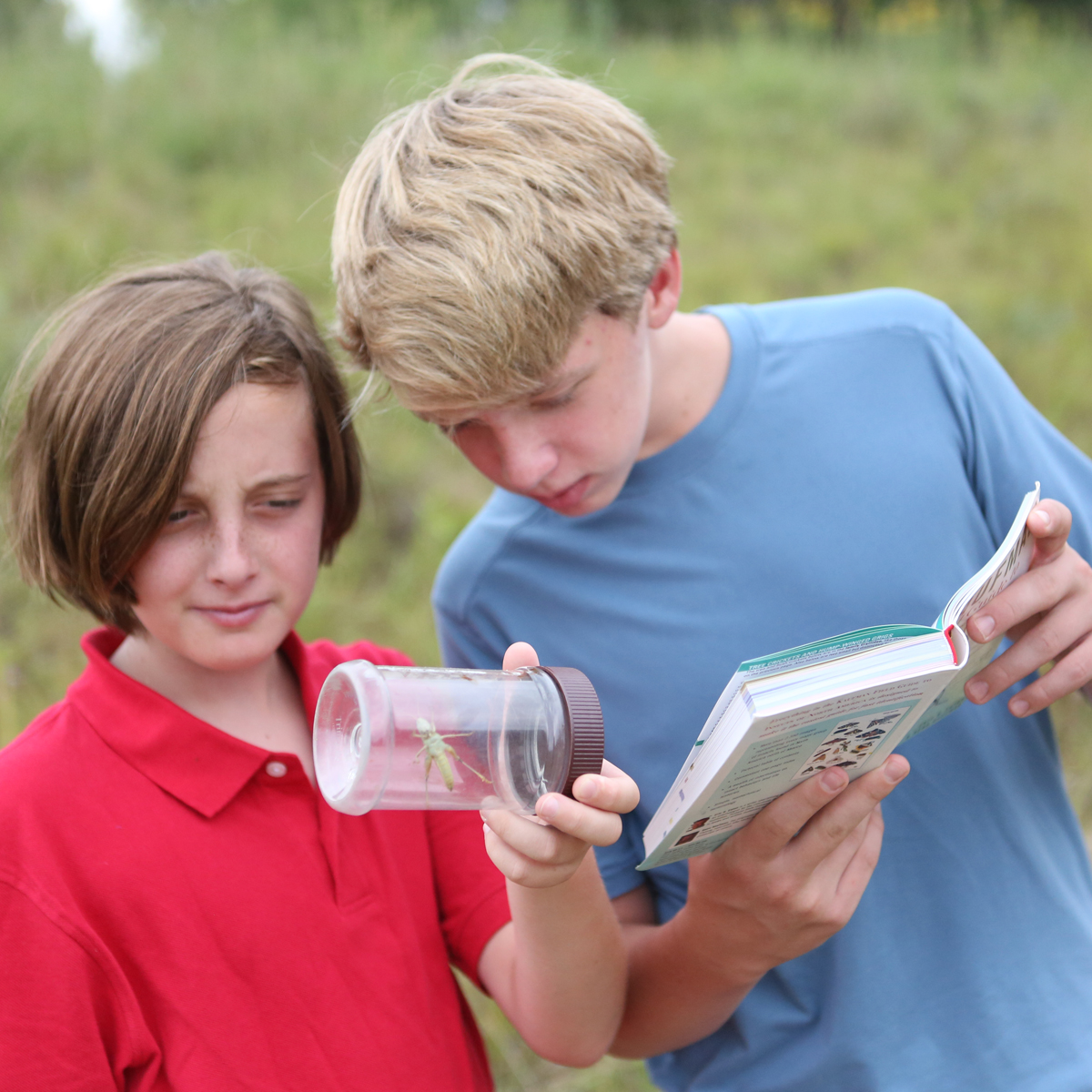
Wednesday, April 22nd is Earth Day, but there’s no reason we can’t celebrate all month long. Besides hiking and exploring, here are some of our favorite environmental science projects. Just click on the experiment names for directions and photos. You can find more fun outdoor experiments in my books “Kitchen Science Lab for Kids” and “Outdoor Science Lab for Kids“ (Quarry Books.)
Homemade Sweep Nets: Make a sweep net from a pillowcase and a hanger to see what arthropods are hanging out in your favorite outdoor spaces.
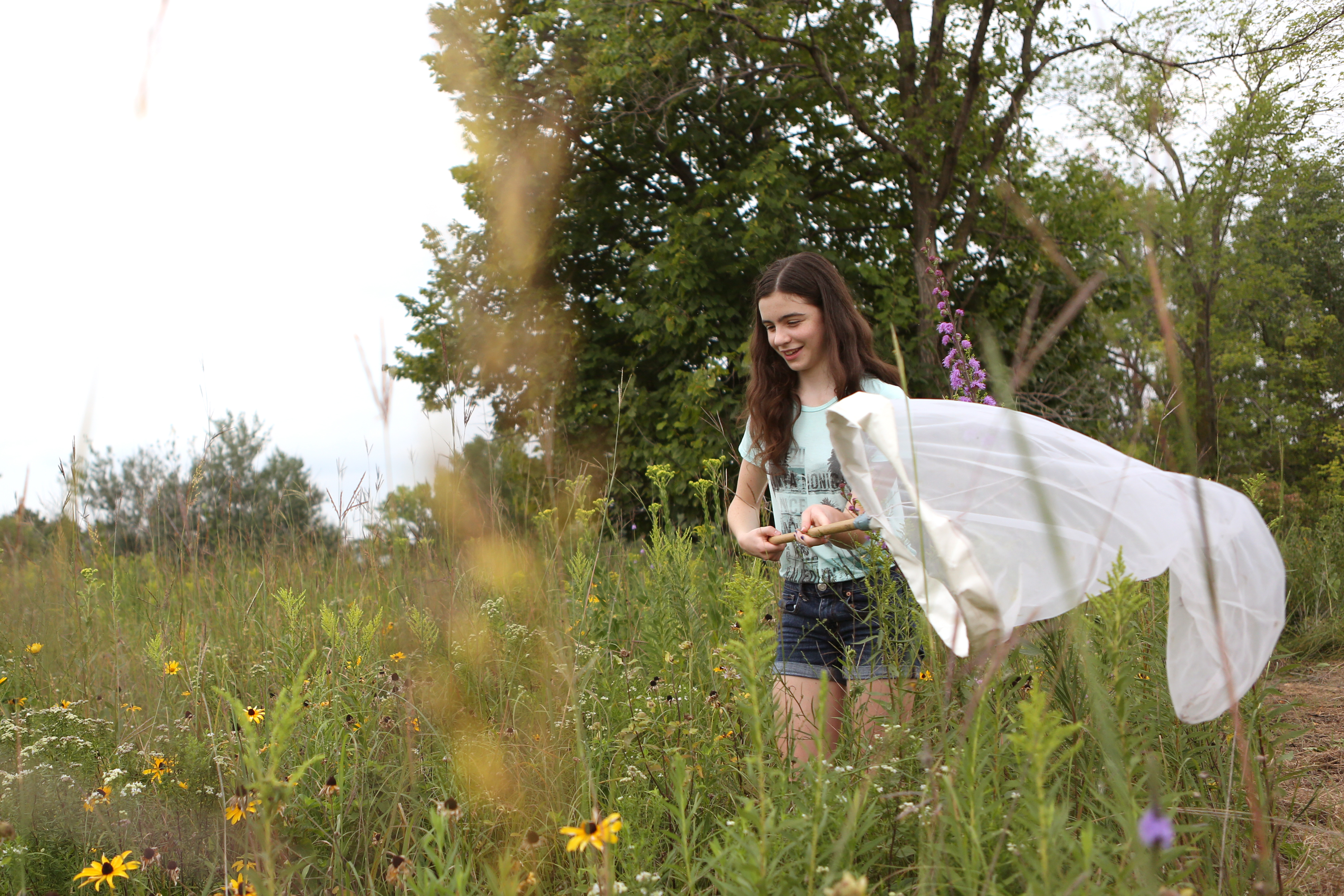
Homemade Sweep Nets from Outdoor Science Lab for Kids (Quarry Books)
Window Sprouts: Plant a bean in a plastic baggie with a damp paper towel to see how plants need only water and air to sprout roots and leaves. Here’s a short video demonstrating how to make a window garden.
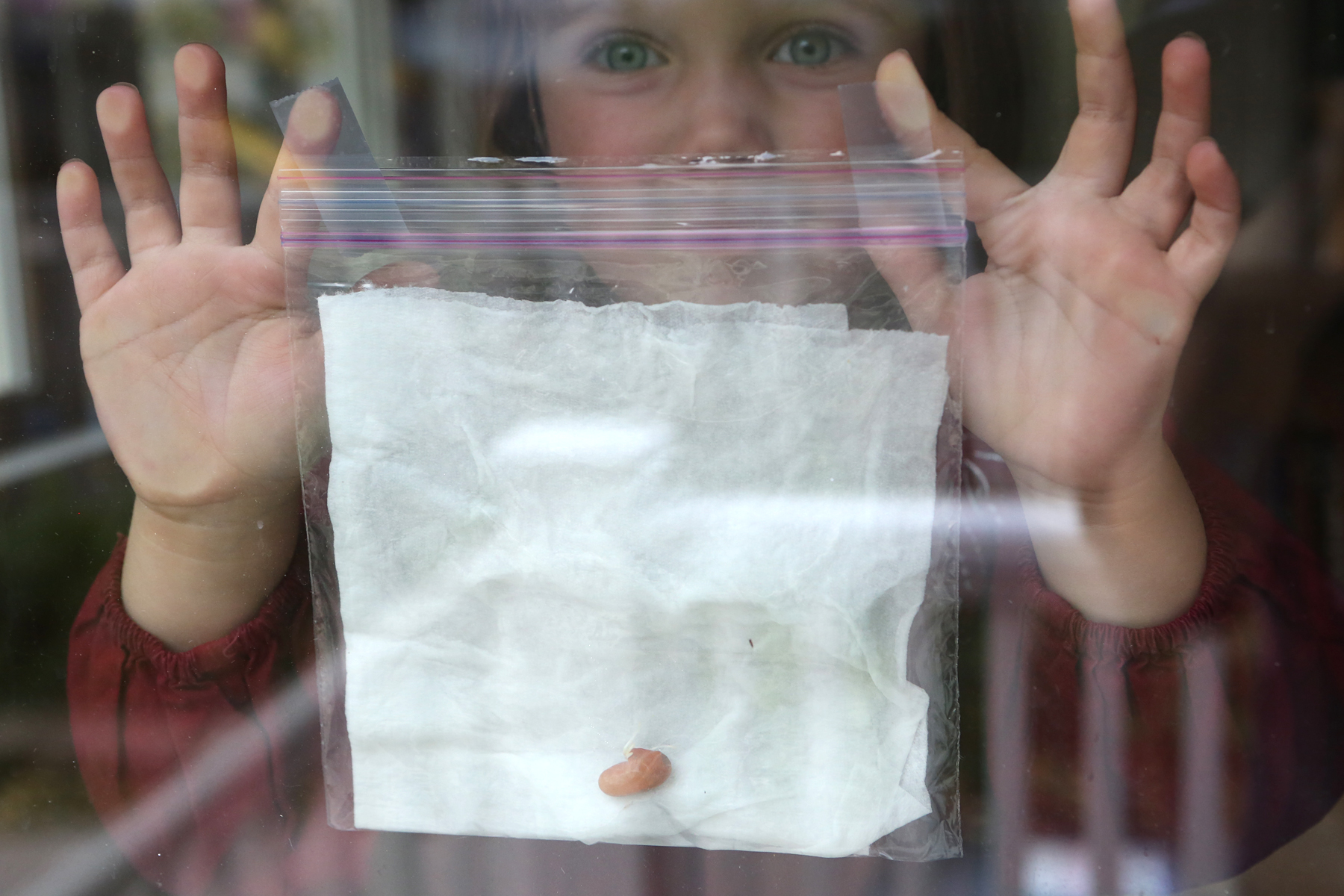
Window Sprouts from Kitchen Science Lab for Kids Quarto Books
Homemade Solar Oven: Using a pizza box, aluminum foil, plastic wrap, and newspaper, you can harness the sun’s energy to cook your own S’mores!
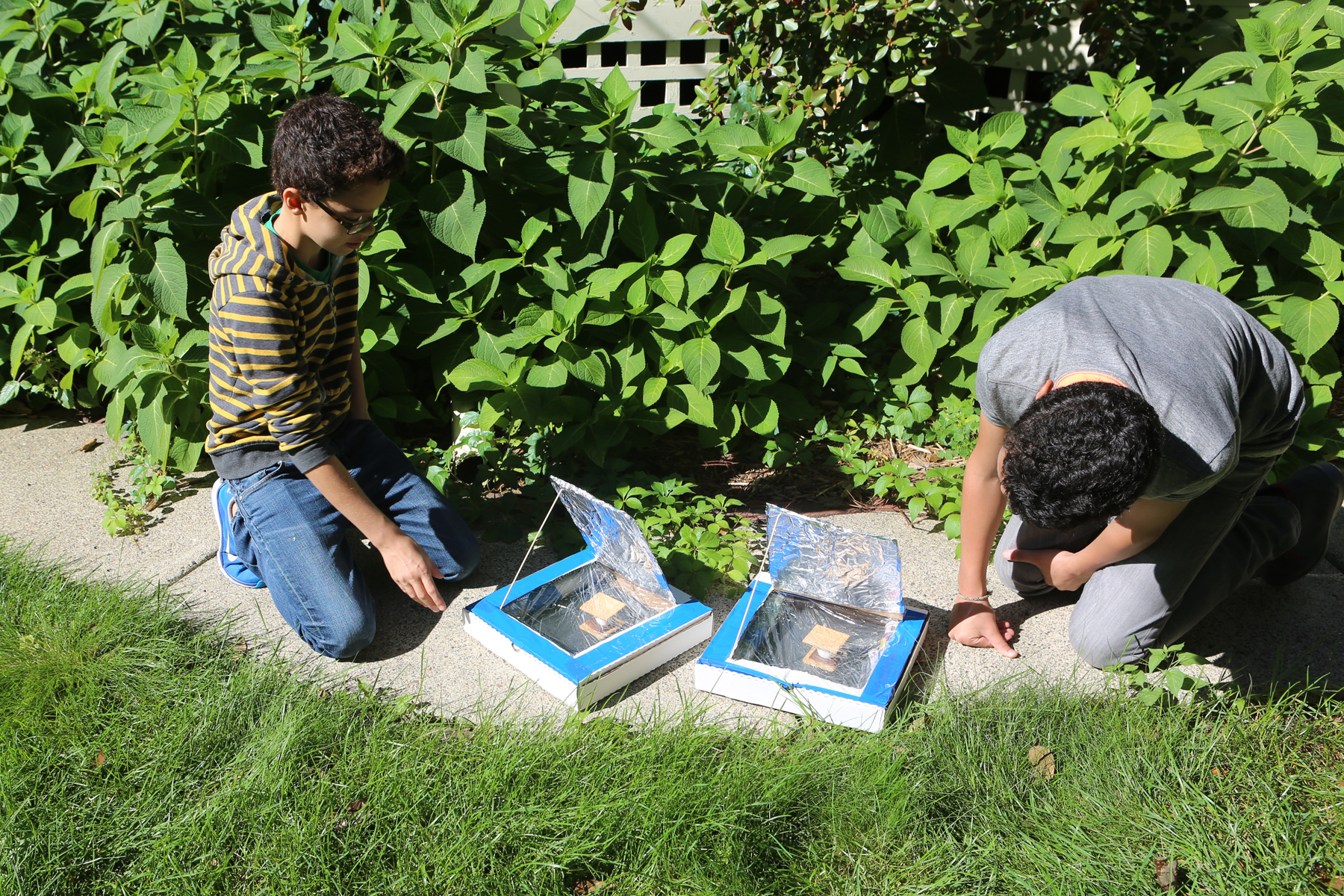
Nature Walk Bracelets: Wrap some duct tape around your wrist (inside out) and take a walk, sticking interesting natural objects like leaves and flowers to your bracelet. It’s a great way to get outdoors and engage with nature. Bring a bag along so you can pick up any trash you find.
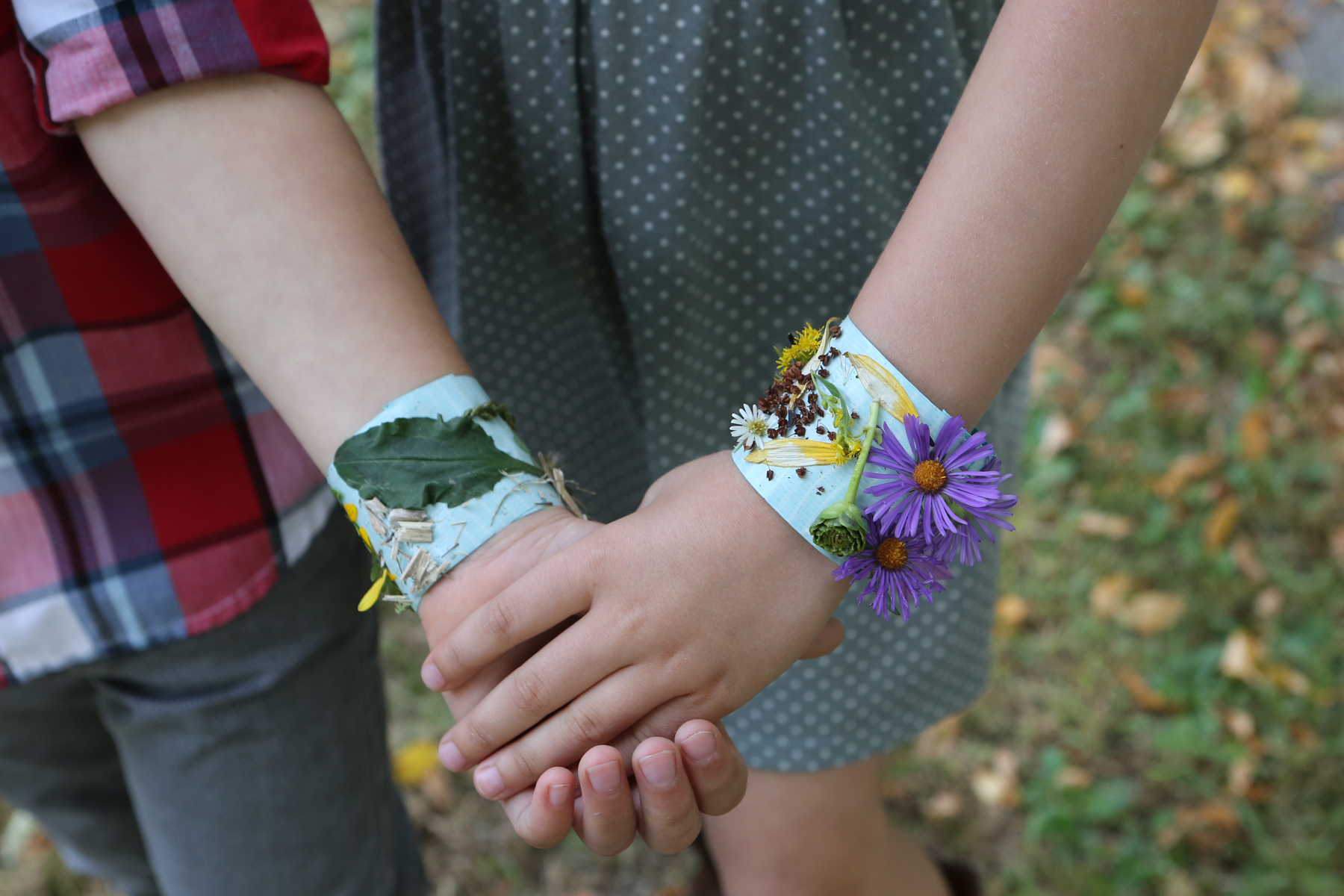
Carbon Dioxide and Ocean Acidity: See for yourself how the carbon dioxide in your own breath can make a water-based solution more acidic. The project illustrates why adding too much carbon dioxide to Earth’s atmosphere can be harmful to ocean creatures.
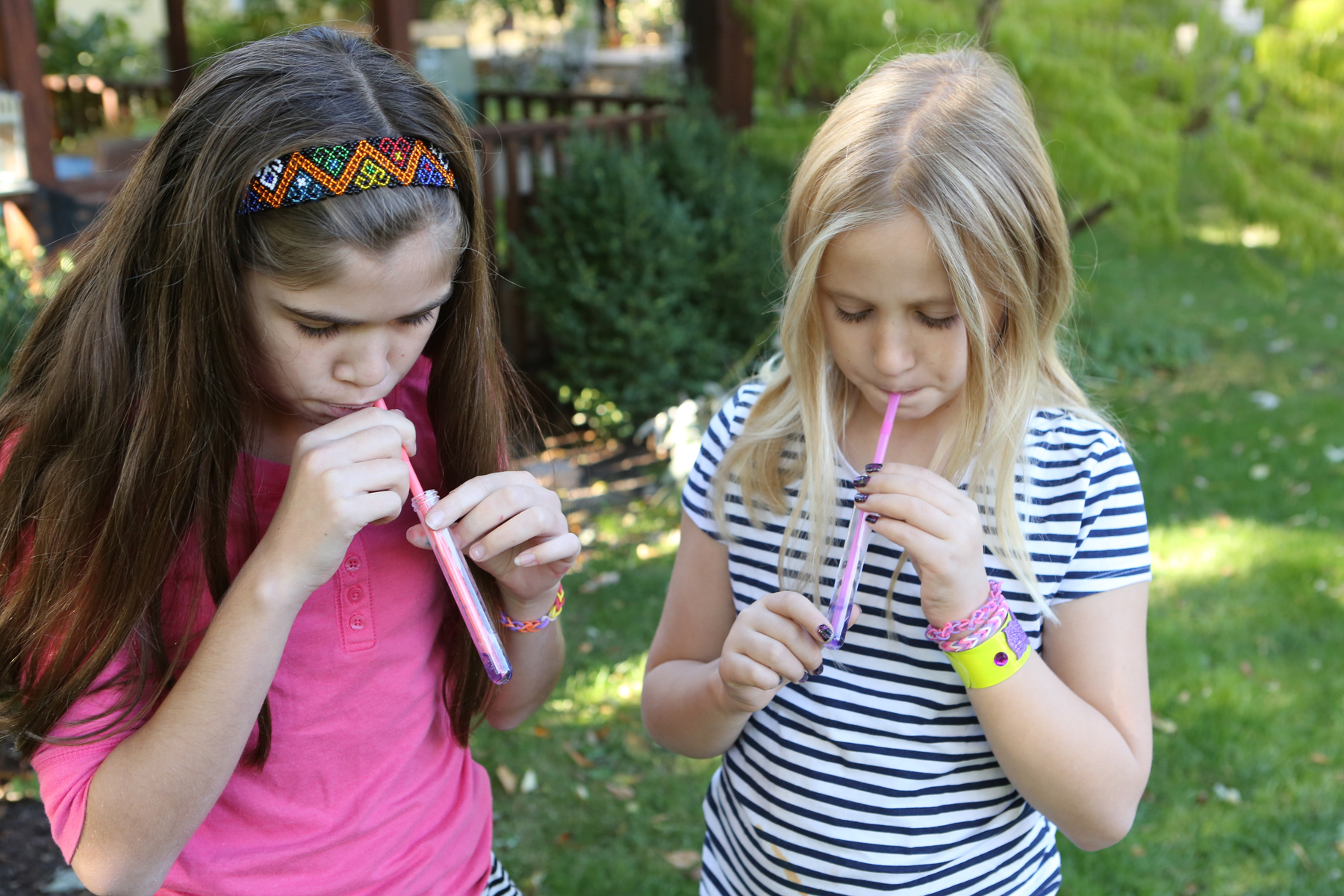
Ocean Acidification Experiment from Kitchen Science Lab for Kids (Quarry Books)
Plant Transpiration: See how trees “sweat” in this survival science experiment.
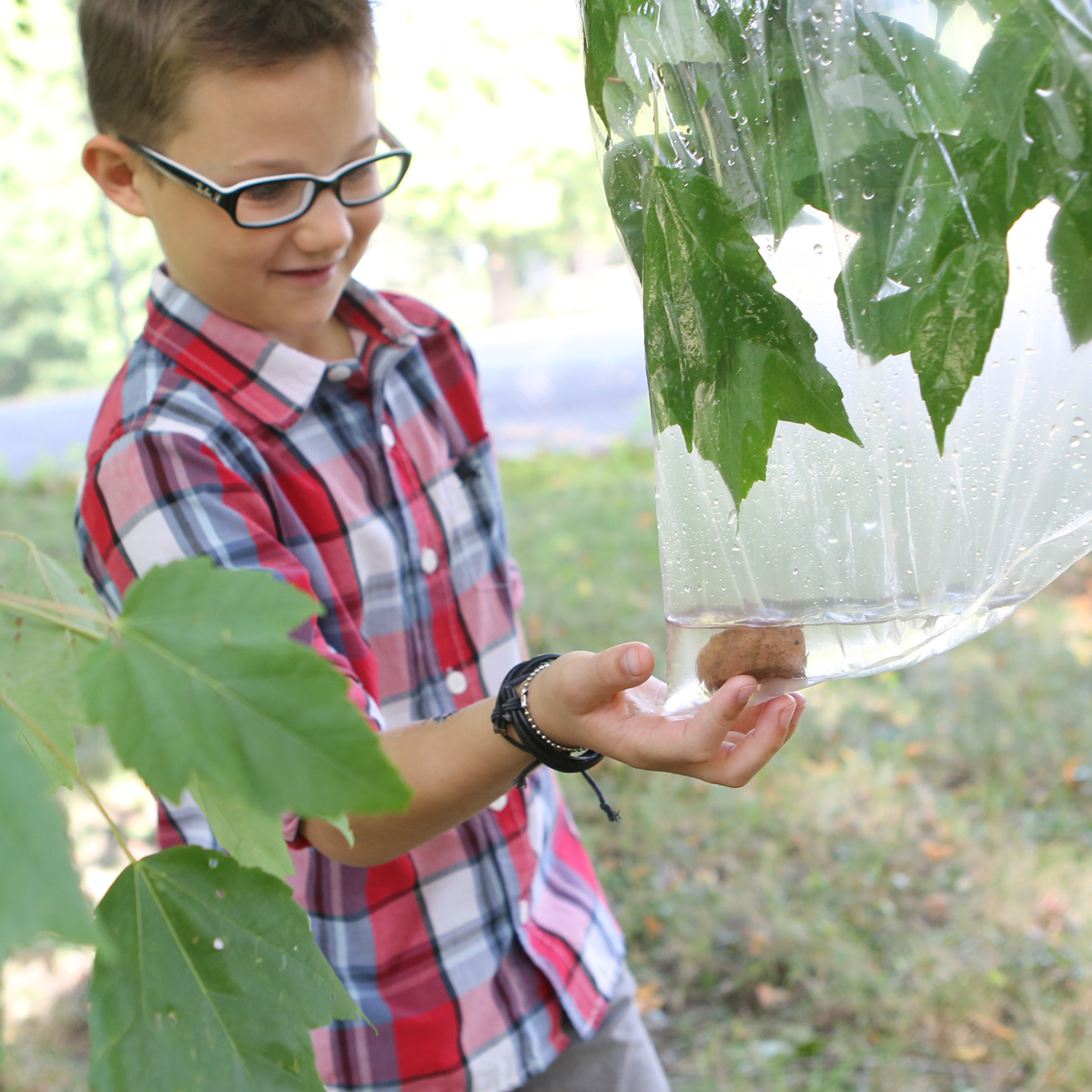
Plant Transpiration experiment from Kitchen Science Lab for Kids
Earthworm Experiment: Do you know what kind of earthworms are living in your back yard?
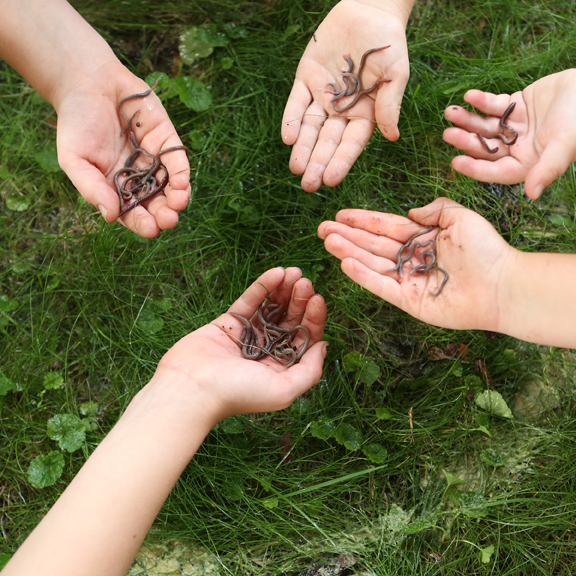
Earthworm Eruption from Outdoor Science Lab for Kids (Quarry Books 2018)
Composting: Be a composting detective. Bury some things in your back yard (away from power cables) and dig them up in a few months to see how they look. Composting reduces methane gas emissions (a greenhouse gas) from dumps.

Composting Experiment from Outdoor Science Lab for Kids
Diffusion and Osmosis: See for yourself how the chemicals we add to water, put on our streets to melt ice, and spray on our lawns and crops can move into our soil, ground water, rivers, lakes and oceans.
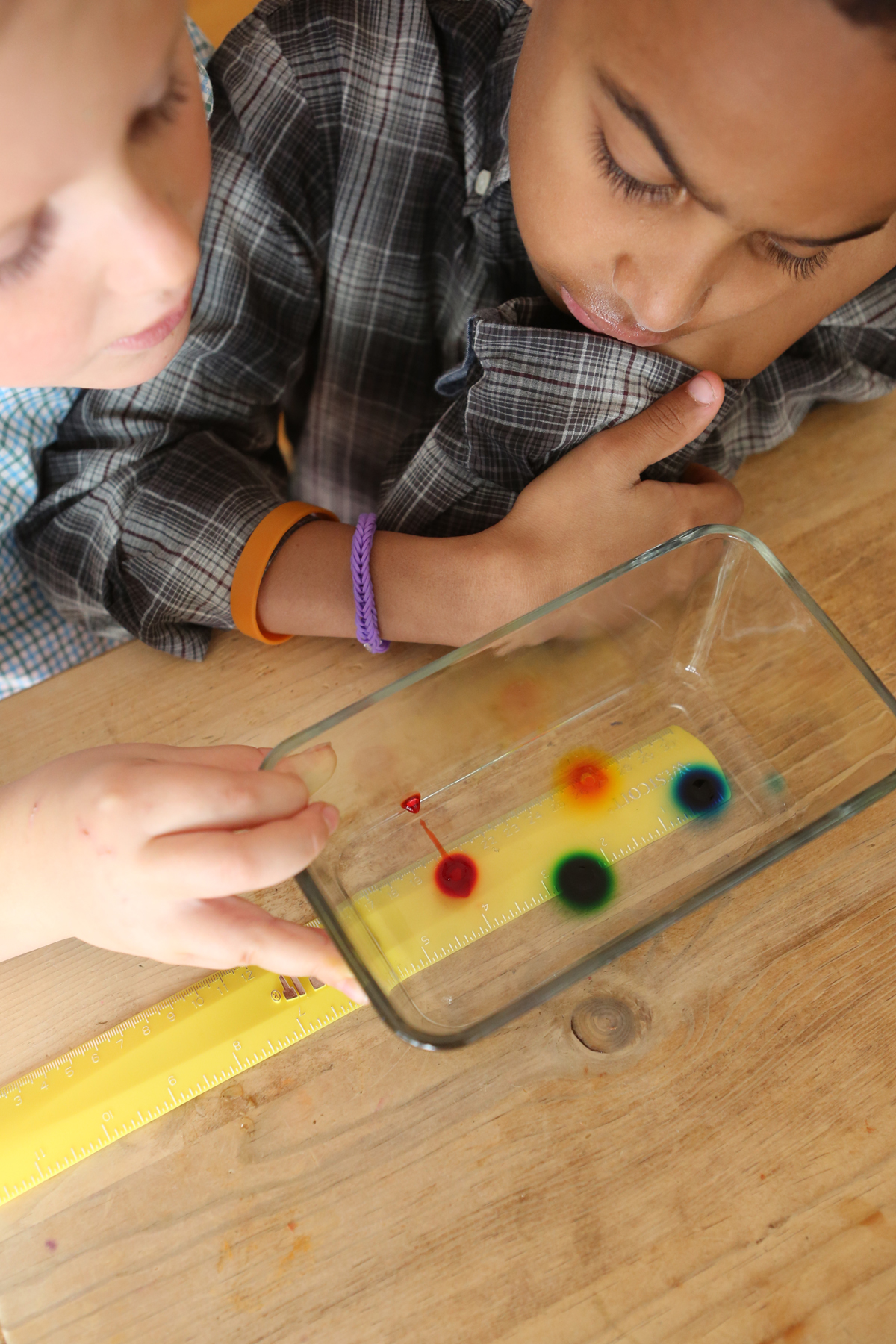
Diffusion Experiment from Kitchen Science Lab for Kids (Quarry Books)
Solar Water Purification: This project illustrates the greenhouse effect and is a fun “survival science” experiment. Requires hot sun and some patience!
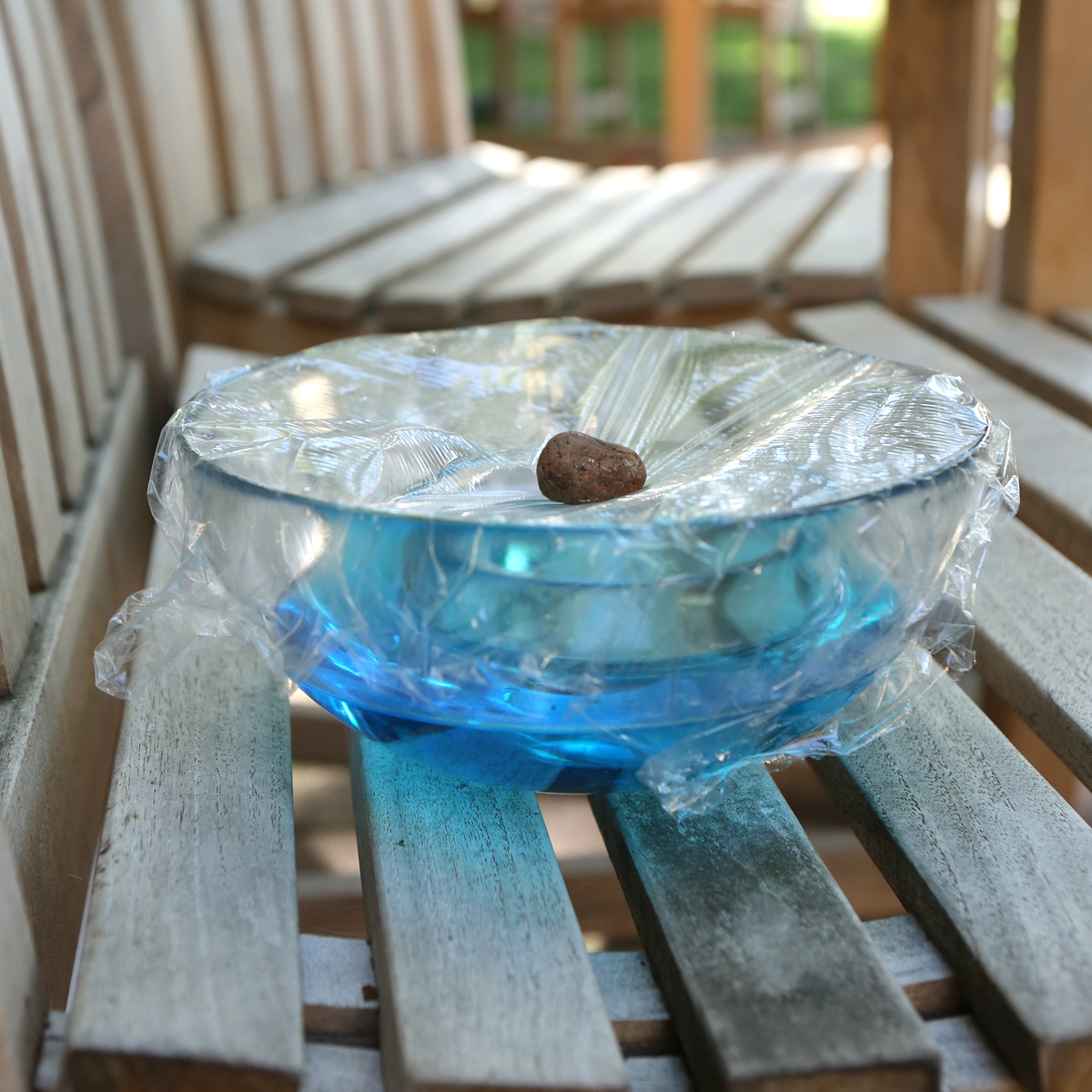
Solar Water Purification from Kitchen Science Lab for Kids
Citizen Science: Don’t forget about all the real environmental research projects you can participate in through Citizen Science programs all around the world!
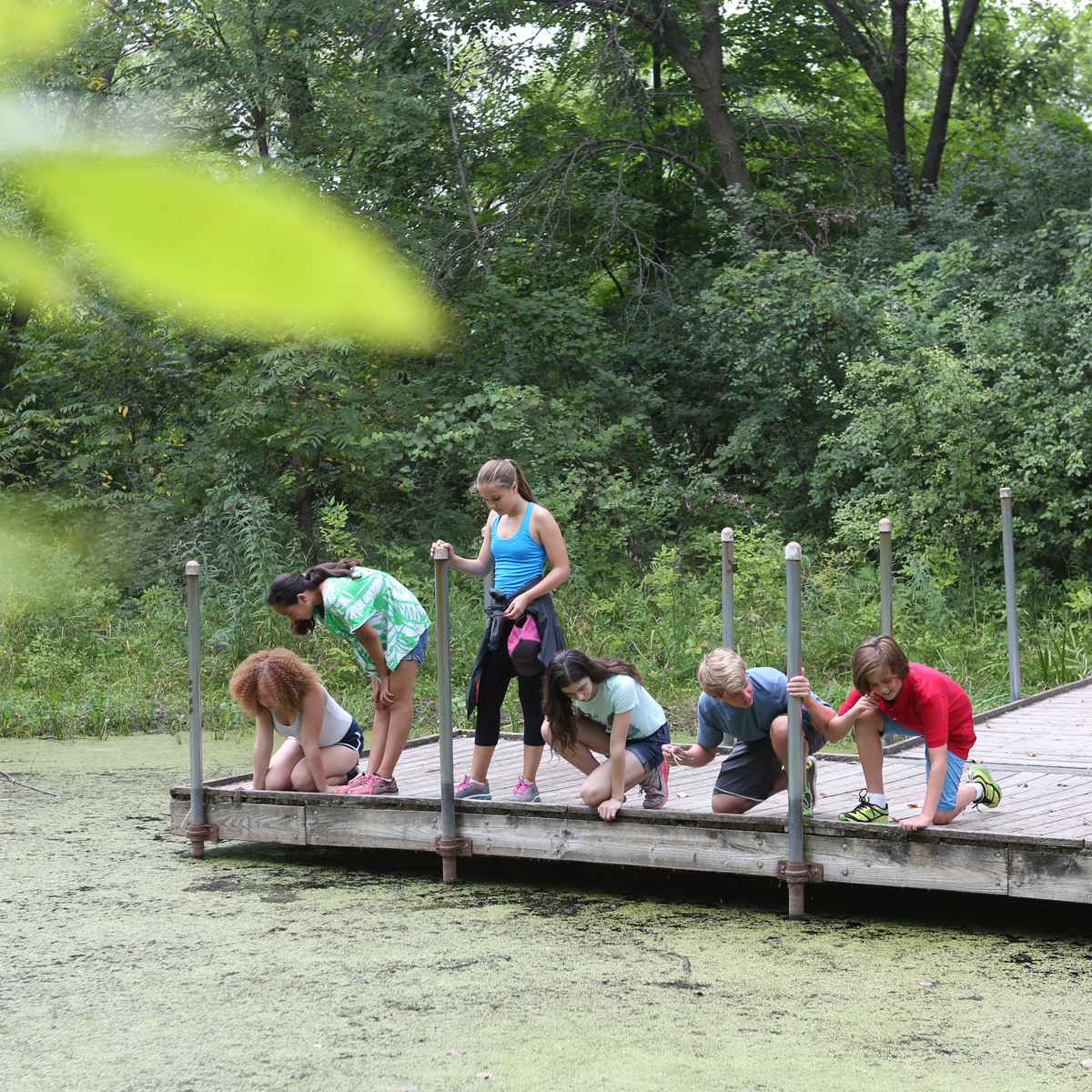
For mores activities and games, check out NASA’s Climate Kids website, to see a kid-friendly diagram of the water cycle, click here, or just get outside and enjoy the beautiful planet that sustains and nurtures us.
Homemade Petri Plates
- by KitchenPantryScientist
Does hand-washing really get rid of germs? Yes! Scrubbing your hands with soap and water for the length of time it takes you to recite the ABC’s will get rid of the majority of harmful microbes on your hands.
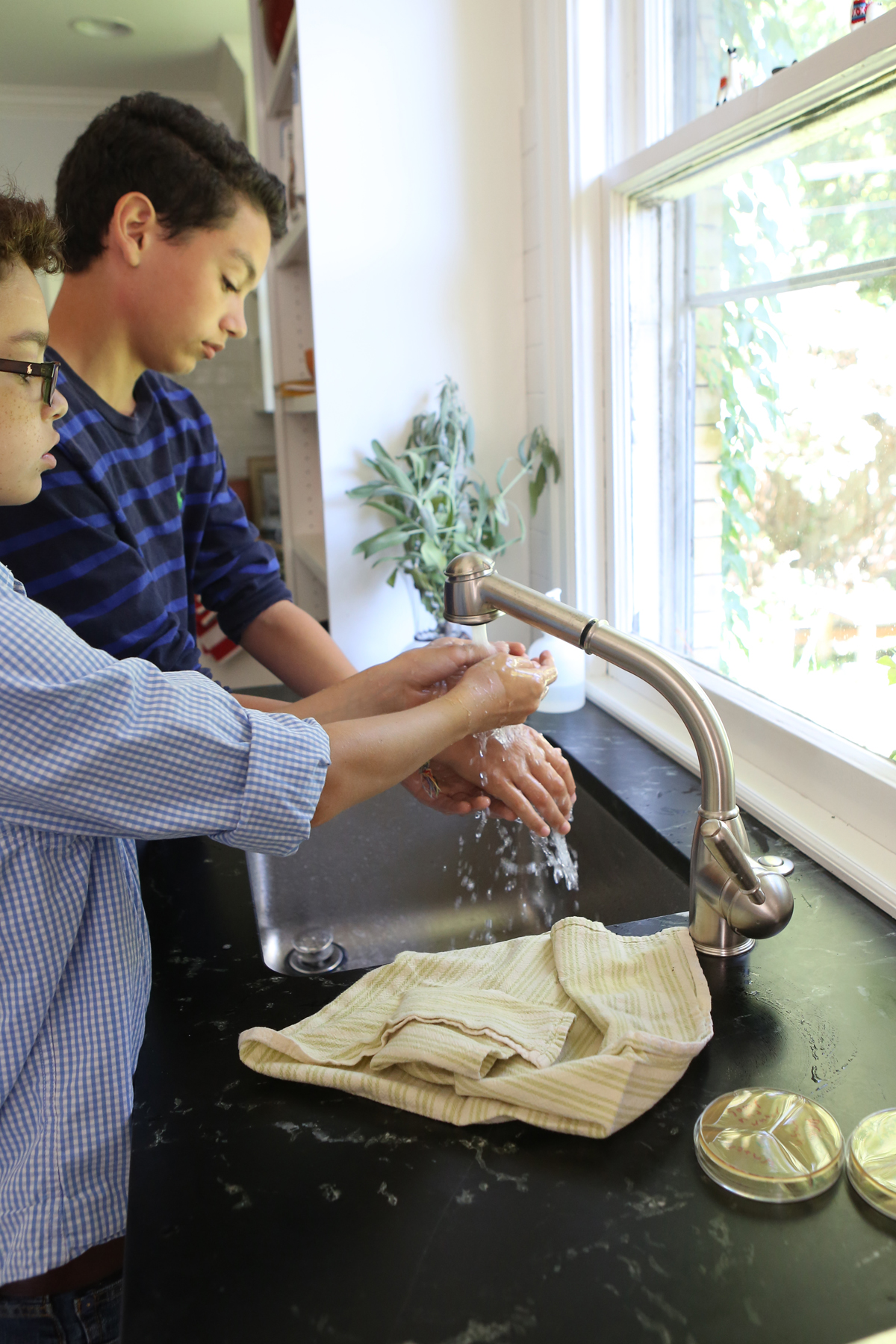
Image from “Kitchen Science Lab for Kids” (Quarto Books 2016)
Here’s a video on how to make Petri plates for a hand-washing experiment, where you touch labeled sections of the plates with your fingertips before washing, after washing with water alone, and after scrubbing with soap or hand sanitizer. You can also use the plates to swab and grow microbes from around your house or school!
Find the recipe for Petri Plates in my book Kitchen Science Lab for Kids, or click here for a link to the recipe on my original blog post, where you can also read more about the science!
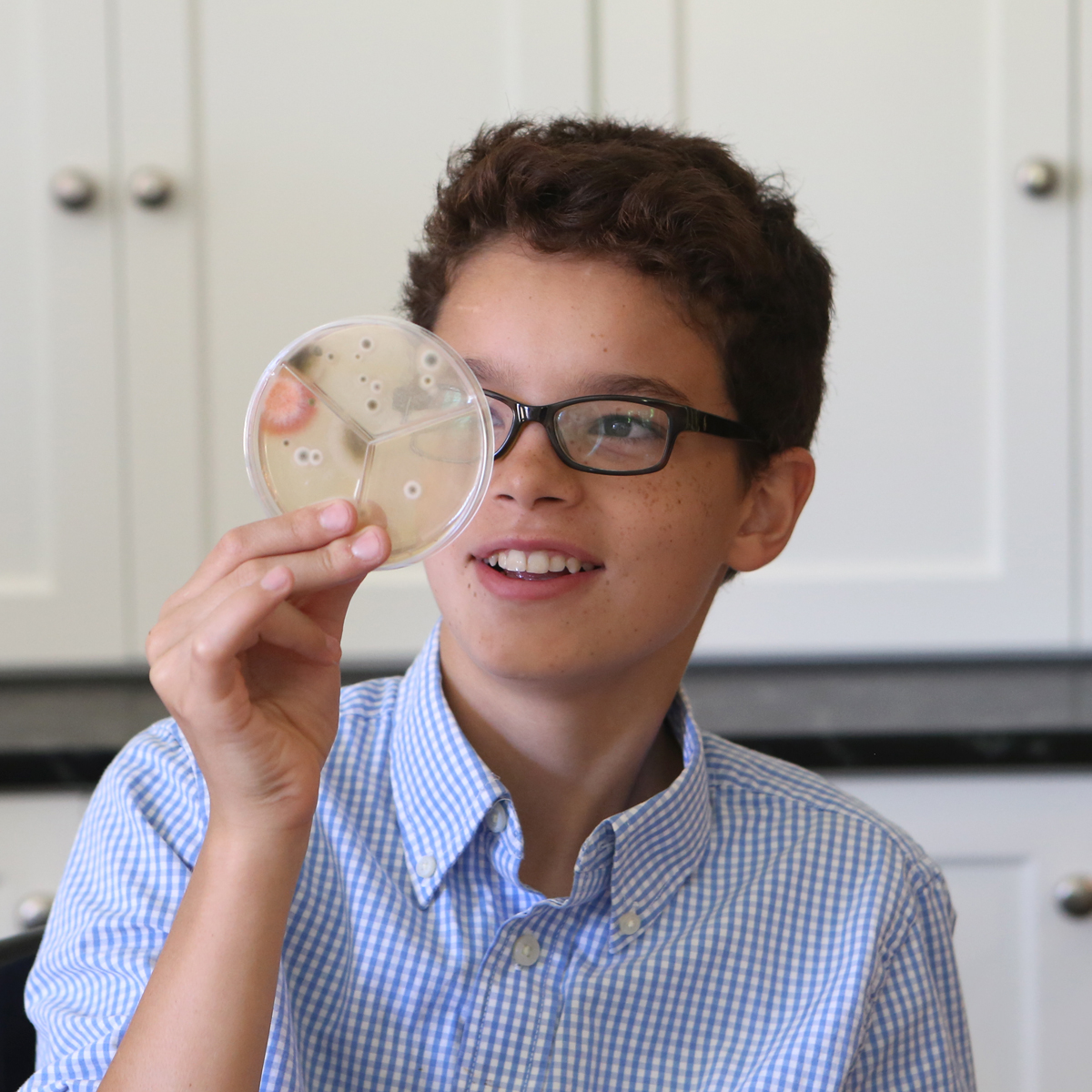
Homemade Petri Plates from “Kitchen Science Lab for Kids” (Quarto Books 2016)
Rainbow Icicles -Winter Science for Kids
- by KitchenPantryScientist
Grab your coat and head outside to try this fun winter science project!
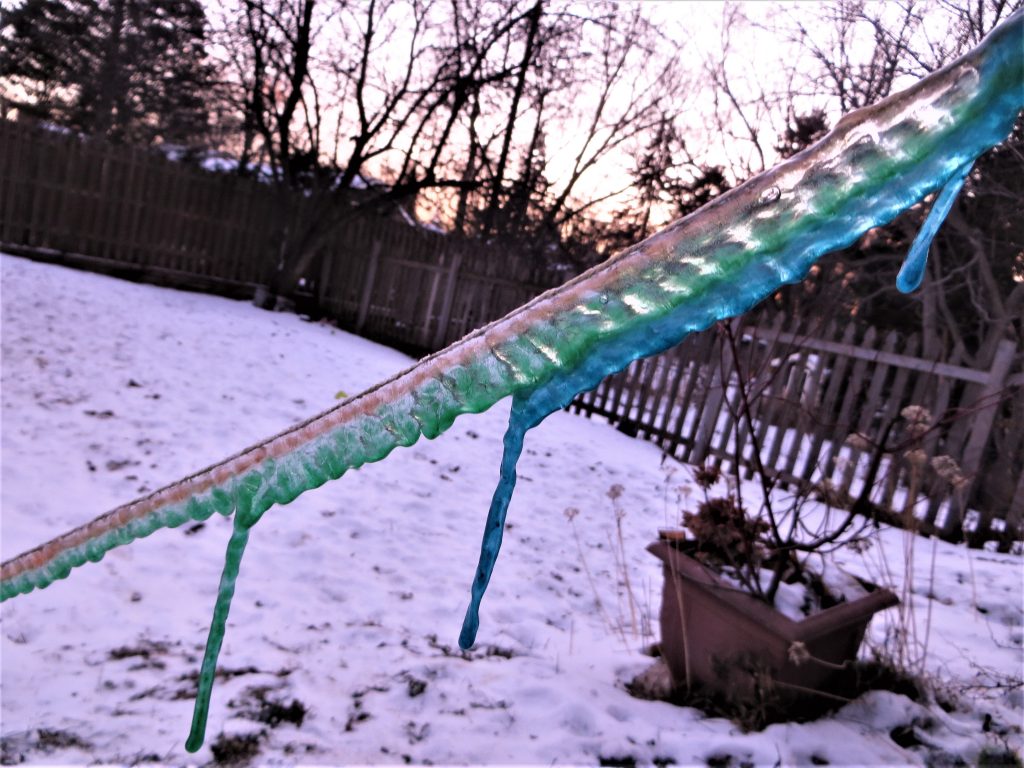
Rainbow Ice (kitchenpantryscientist.com)
You’ll need:
A large plastic zipper bag
Cotton kitchen twine
a toothpick or wooden skewer
ice-cold water
food coloring
a spray bottle
a squeeze bottle or syringe (optional, but helpful)
a very cold day (below 10 degrees F works best, but you can try it on any day when it’s below freezing)
Note: This experiment takes lots of playing around and results will vary depending on how cold it is outside. Remind your kids (and yourself) to be patient and try it on a colder day if it doesn’t work the first time around! If the bag leaks too quickly, try making one with smaller holes around the string.
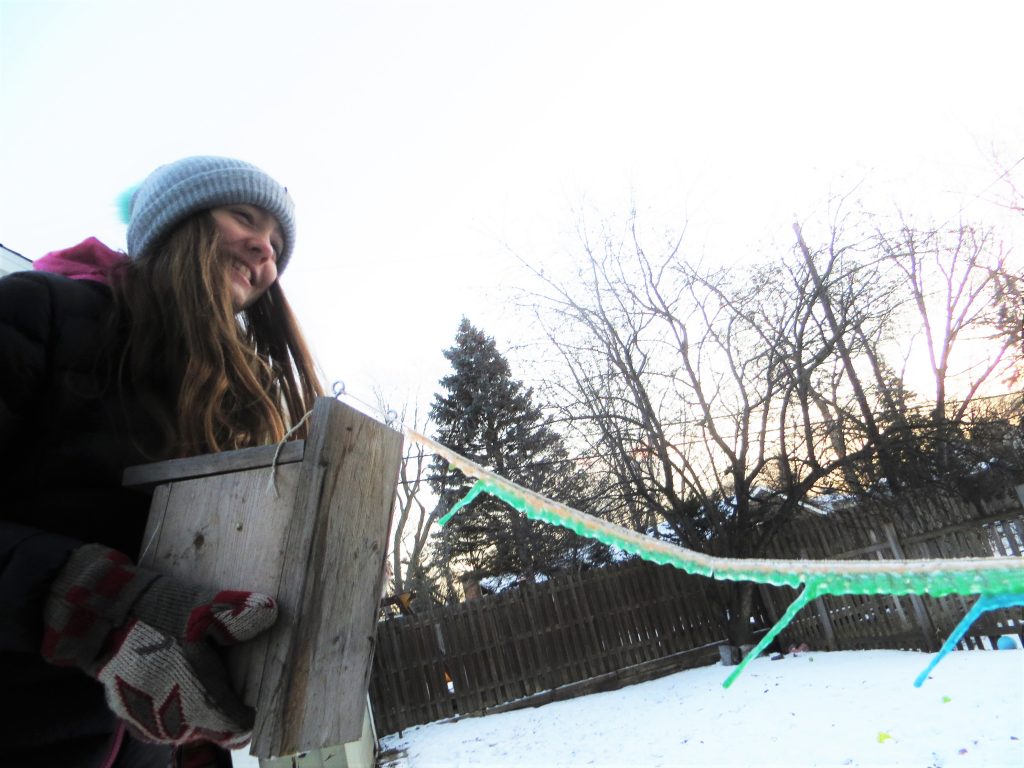
Rainbow Ice (kitchenpantryscientist.com)
What to do:
- Use a toothpick or skewer to poke 3 small holes in the bottom of a zipper plastic bag. Make one in the middle and one on each end.
- Cut three long (3 feet or so) pieces of kitchen twine and knot them at one end.
- Carefully thread the twine through the holes in the bag so that the knots are inside the bag to keep the strings from falling through. Try to keep the holes from getting too big, since the bag will be filled with water and you’ll want it to drip out very slowly around the string.
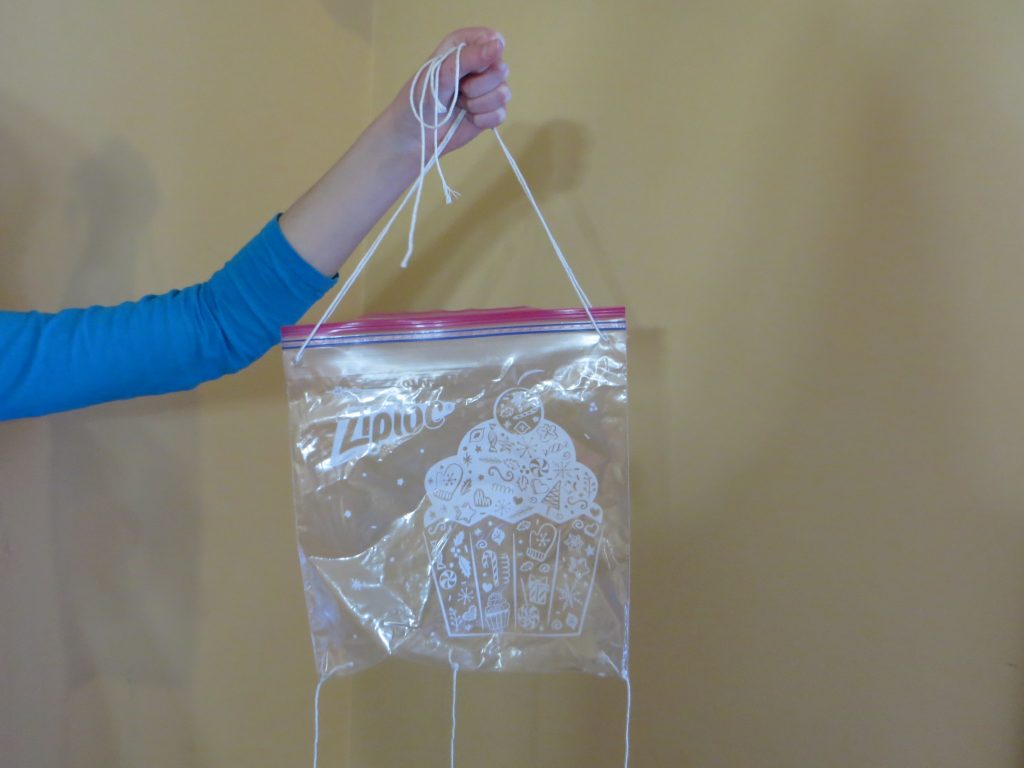
Rainbow Ice (kitchenpantryscientist.com)
4. Attach two more pieces of twine to each top corner of the bag (above the zipper) to use for hanging the bag
5. Go outside and hang the bag from a low tree branch or railing.
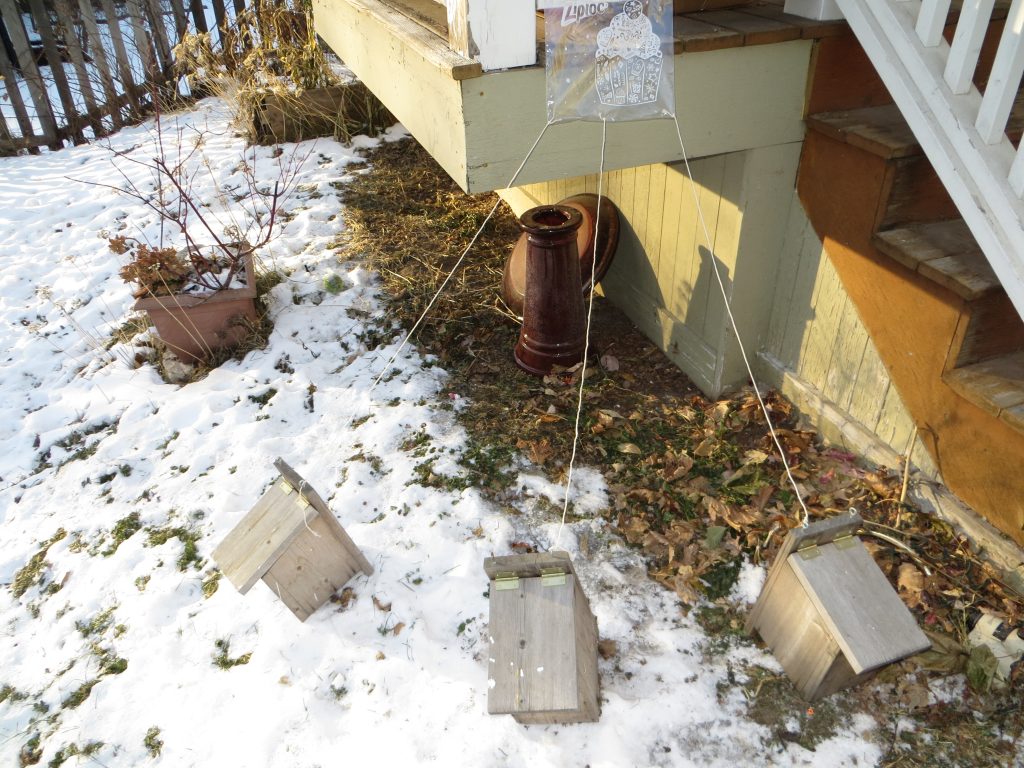
6. Tie each of the three strings to something on the ground, like a rock, piece of wood, or the handle of an empty milk carton filled with water to weight it down. Arrange the objects so that the strings loosely radiate out at around a 45 degree angle. (See photo)
7. Add food coloring to some ice-cold water in a pitcher.
8. Fill the spray bottle with ice-cold water.
9. Add the cold colorful water to the zipper bag hanging outside. Zip the top of the back to slow the rate of leaking.
10. Immediately spray the strings with water to guide the leaking water down the strings.
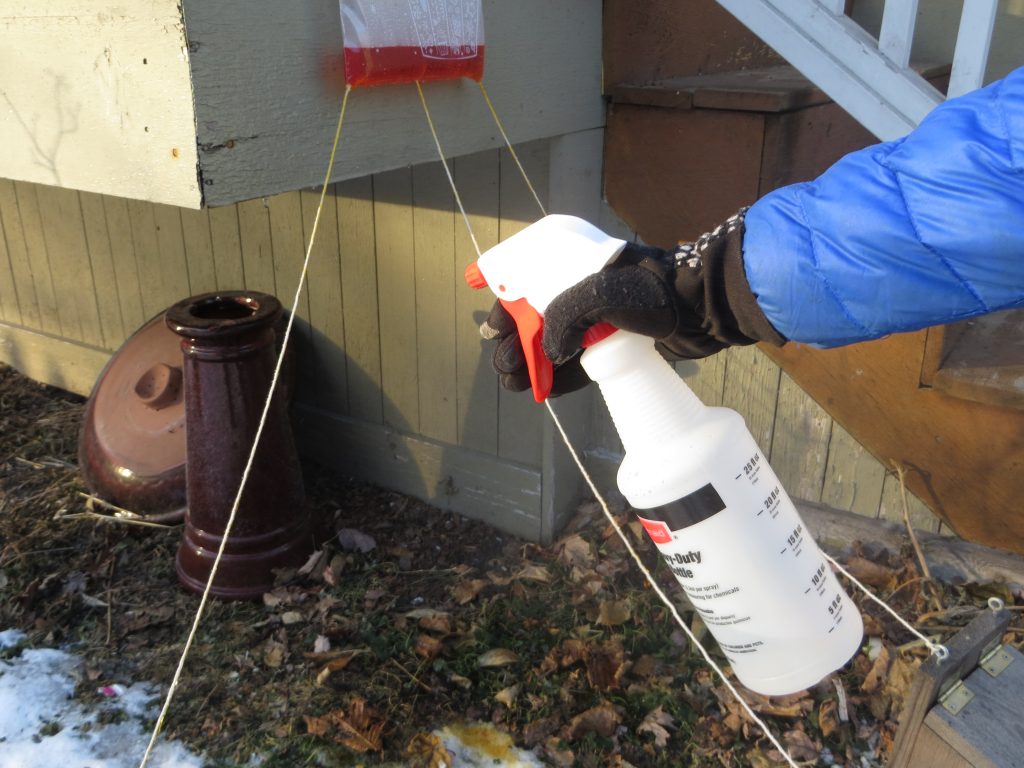
10. Wait for the water on the strings to freeze. Use your syringe to add a little bit more water to the strings (same color) and wait for them to freeze again. Repeat until you have a nice layer of ice/icicles.
11. Refill the bag, using a different color of ice-cold water. Spray the strings lightly again. Repeat step 11.
12. Add layers of color to the icicles until you’re happy with the way they look!
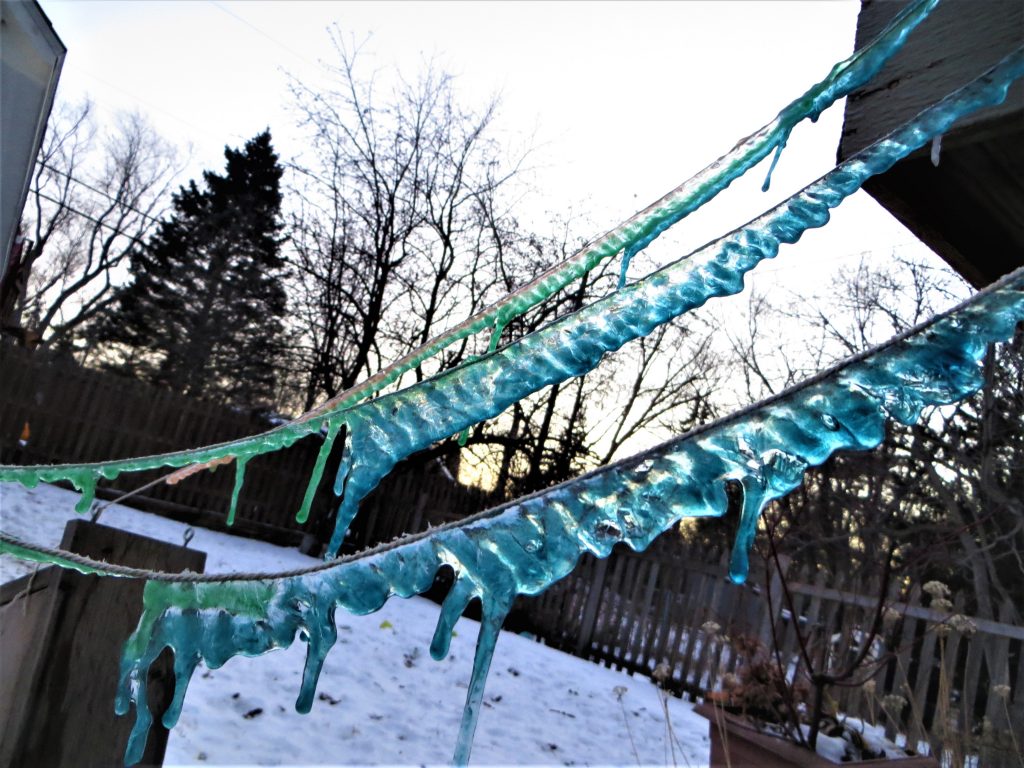
Rainbow Ice (kitchenpantryscientist.com)
The science behind the fun:
Icicles form when dripping water starts to freeze. Scientists have discovered that the tips of icicles are the coldest part, so that water moving down icicles freezes onto the ends, forming the long spikes you’ve seen if you live in a cold climate. When you add different colors of water to icicles in sequence, the color you add last will freeze onto the tip of the ice.
Here’s a cool article on icicle science by an expert, and another great article on “Why Icicles Look the Way They Do.”
You’ll find more fun ice science experiments in my book “Outdoor Science Lab for Kids” and in my upcoming books “STEAM Lab for Kids” (Quarry Books April 2018) and “Star Wars Maker Lab” (DK- July 2018)

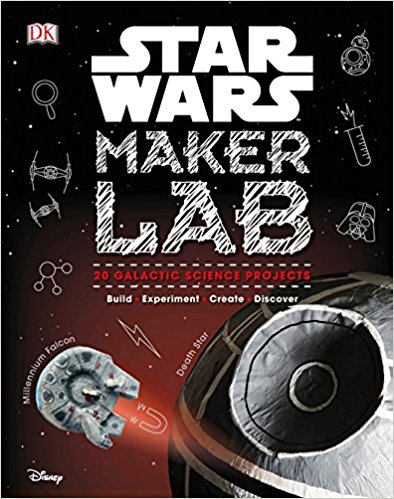
Six Cool Facts about the 2017 Total Solar Eclipse
- by KitchenPantryScientist
In less than two weeks, the kids and I will hit the road to venture into the path of totality of the August 21st total solar eclipse. We’re hoping for clear skies in St. Joseph, MO, so that we can stand under the moon-darkened sky and catch a glimpse of the Sun’s corona.
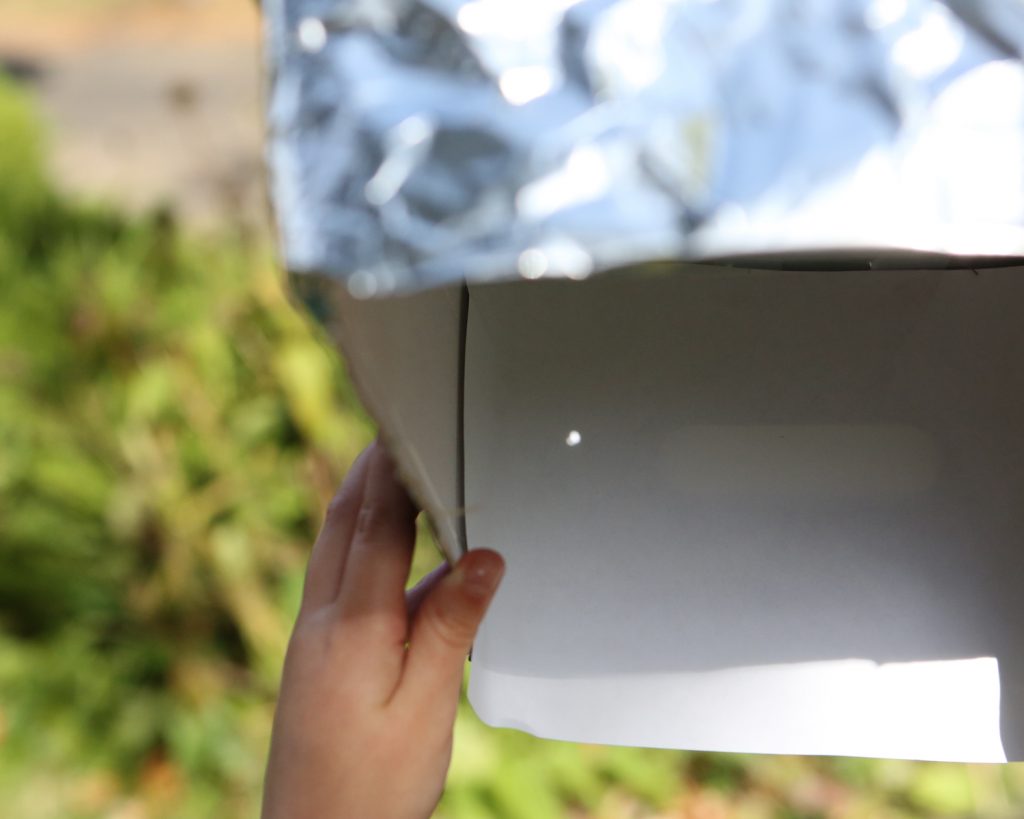
Pinhole Solar Viewer- Kitchen Science Lab for Kids (Quarry Books)
NASA’s website is one of my favorite science resources, and they have tons of great information on the upcoming total solar eclipse. Check it out to learn when and where you can watch the eclipse, and how much of the Sun will be covered up in your back yard.
To safely watch the eclipse without damaging your eyes, you’ll need National Science Foundation-approved solar viewing glasses. If you don’t have glasses, you can easily view it indirectly by making a pinhole viewer. Here’s a link to an article I wrote for Scholastic Parents on how to build a solar viewer using a shoe box and some aluminum foil.
The Exploratorium in San Francisco has a fantastic Total Solar Eclipse 2017 app that you can download for more resources and to watch the eclipse live.
Here are some of the coolest things I learned about total solar eclipses from NASA’s website:
1: During a total eclipse, it’s possible to see bright stars and planets, even in the middle of the day. (I knew it would get dark, but that’s amazing!)
2. The Sun is 400 times wider than the Moon, but it’s 400 times farther away, so they appear to be the same size if you’re looking at them from Earth. That’s why the Moon can completely cover the sun. Scientists describe this by saying that they have the same angular size.
3. If you’re in the path of the total eclipse and place a large sheet of white paper on the ground, you may see dancing “shadow bands” moments before and after the eclipse, which are created by tiny slivers of sunlight passing through the currents of Earth’s atmosphere.
4. The temperature in areas of the Moon’s shadow will briefly drop as the Sun’s light is blocked.
5. The only popular song that refers directly to an actual solar eclipse is Carly Simon’s song “You’re so Vain.” (1970 total solar eclipse in Nova Scotia) (Around 3:05 in the song.)
6. Just before a total solar eclipse, you can see flashes of light called “Bailey’s Beads”around the edges of the dark circle of the Moon. They’re caused by sunlight flashing through canyons on the Moon’s surface.
Will you be watching? The next total solar eclipse won’t traverse the continental United States until April, 2024.
Time Lapse of Monarch Butterfly Emerging from Chrysalis
- by KitchenPantryScientist
Our eight Monarch caterpillars were in chrysalises when we returned from our vacation, and yesterday the first of them emerged! We were lucky enough to catch it on our iPhone time-lapse, which makes everything look faster than it actually happens. You’ll be amazed at how the butterfly pumps fluid from its body to expand its beautiful orange and black wings.
Outdoor Science Apps
- by KitchenPantryScientist
It’s almost summer! Whether you’re heading to the back yard, a park or a nature center, here are a few of our favorite free apps to enhance your next outdoor adventure…
Merlin Bird ID (free) The Cornell Lab of Ornithology makes it easy to identify that mystery bird in your back yard. http://merlin.allaboutbirds.org/
Leaf Snap: (free) Take a photo, identify a plant.http://leafsnap.com/
Bee Friendly: (free) Be a citizen scientist with this cool app that lets you identify and tracking pollinators like bees in your area. http://earthwatch.org/scientific-research/special-initiatives/bee-friend-your-garden
Starmap: iOS (Starmap Lite is free.) Use this app to easily find and identify constellations in the night sky. http://www.star-map.fr/
ISS Spotter: (free) It’s cool to watch the International Space Station fly across the horizon at night. This app will help you spot it, and even has an alarm so you don’t miss it. https://itunes.apple.com/us/app/iss-spotter/id523486350?mt=8
Magnificent : (free version) Magnify leaves, bugs and anything else you want to take a closer look at. http://habitualdigitalsoftware.com/
The Cousteaus: Family with a Vision:
- by KitchenPantryScientist
A few weeks ago, the kids and I were lucky enough to hear the Cousteau family speak at Beth El Synagogue as part of their Inspiring Minds Series. World-famous ocean researcher, conservationist and visionary Jacques Cousteau died in 1997, but his son Jean-Michel and his grandchildren are carrying on his legacy.
Jean-Michele was delightful, joking with his grown kids onstage even as he reminded us that there is only one water system on Earth and that we need to protect it. He worried out loud about what the future holds for our children, and told the story of walking down a beach to see a little boy return a piece of litter to an embarrassed adult with the words, “Excuse me sir, you dropped this!” His stories from the front lines of our struggling seas and polluted beaches reminded the audience that teaching conservation is most often a matter of “reaching the heart.” His PBS website “Ocean Adventures” is filled with fantastic videos and activities for kids.
Celine Cousteau, who has a background in psychology, talked about living her life at split level, with “one eye above the water, but always happy to be pulled back to the ocean.” After first visiting the Brazilian Amazon when she was nine, she has returned every year and is currently working on a project called “Tribes on the Edge,” to educate public on the struggles of the indigenous people there.
She says in one blog post, “Telling the stories of the indigenous people of the Vale do Javari is nothing short of complex- from the logistics and production, to the tribal politics, to the content. I could not have chosen a more challenging subject and location…but really, it chose me. They need to be heard and I can help make that happen. They want the world to know they exist and they matter. They don’t want to die from hepatitis, malaria, tuberculosis, or be contaminated by the invasion of oil companies or illegal activities. They want to choose their fate. Wouldn’t you?”
Fabien Cousteau talked about Mission 31, which documented Fabien and his team’s 31 day research stint in Aquarius, the world’s only underwater marine laboratory, located nine miles off the coast of the Florida Keys, and 63 feet beneath the sea. The researchers lived and worked underwater, and when they weren’t diving, they lived and worked in a space about the size of a school bus!
It was wonderful to hear stories from this adventuring family on a mission to remind us of our responsibilities as stewards of this planet (and of each other.) As a sometimes overprotective parent, it was also great to hear Celine, a mom herself, remind us to let our kids explore and go on some adventures of their own. After all, some day they’ll be the ones out saving the world.
Click here for an experiment you can do with kids to learn more about ocean acidification!
Nature Walk Bracelets
- by KitchenPantryScientist
I can’t get over how young my kids look in this post, which I first published a few years ago. This is a great science/art crossover project and one of these bracelets would make a fantastic Mother’s Day gift! Just bring an extra bag along and pick up some extra flowers, petals, leaves and seeds for mom’s bracelet. You can assemble it when you get home. Just leave one edge leaf-free so you can put it on her wrist!
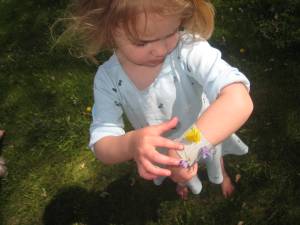
Spring has finally arrived, and a fantastic way to enjoy it is to take a nature walk. While you walk, watch for signs of spring and assemble your discoveries on your wrist with a nature walk bracelet. It’s always a good idea to bring a few bags along too- one for larger treasures (like pine cones) and one for trash. You can study nature and clean up the environment at the same time!
All you need is duct tape. Cut the tape so it fits comfortably around your wrist and tape it around like a bracelet, sticky side out. Take a walk in a park or down your own street and look for small leaves, acorns, flowers and other natural artifacts to adorn your wristlets. Be sure to watch for birds while you walk! There are a number of great apps you can use to identify what species of plants you find, including Leafsnap!

We wore our bracelets all afternoon and several people mistook them for real jewelry. My oldest daughter thought they looked even prettier as the leaves and flowers wilted and flattened out on the tape.
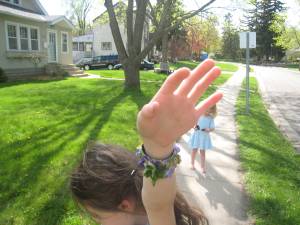 Enjoy!
Enjoy!
Fossil Hunting
- by KitchenPantryScientist
Every fossil has a story to tell.
Whether it’s the spectacular specimen of a dinosaur curled up on it’s eggs or a tiny Crinoid ring, mineralized remains offer us a snapshot of the past, telling us not only what creatures lived where, but about how they lived and the world they inhabited.
Growing up surrounded by the flat-topped, windswept Flint Hills of Kansas, it was hard to imagine that I was living in the bottom of an ancient seabed, but there was evidence of the Permian period all around.
Now, when my kids and I return to my hometown, a fossil-hunting trip is always part of our routine, and we hunt for shells and coral where roads cut through crumbling limestone and and chert (flint.) Looking up at layer after layer of rock and shells, I can almost feel the weight of the water that once covered the land.
An episode of RadioLab we heard on the drive North from Kansas to Minnesota explained that coral keeps time and that by comparing modern coral to ancient coral fossils, scientists discovered that millions of years ago, years were about 40 days shorter than they are now. Can you guess why? Give the podcast a listen here. My mind was blown!
A visit to the Flint Hills Discovery Center in Manhattan, KS gave us more insight into the amazing geology, ecology and anthropology of the Flint Hills and the Konza Prairie that blankets them. Most people don’t know that the great tallgrass prairies of the United States wouldn’t exist if not for humans, who have been burning them for thousands of years.
What do you know about where you live? What’s it like now? What do you think it was like long, long ago? Are there fossils nearby?
Here are some fossil-hunting resources I found online, in case you want to go exploring:
http://geology.about.com/od/fossilbasics/tp/parks-that-allow-fossil-collecting.htm
http://mentalfloss.com/article/50997/10-states-fossil-hunting-sites-public
http://www.fossilguy.com/sites/
http://www.fossils-facts-and-finds.com/fossil_hunting_usa.html
Blundering Into Innovation
- by KitchenPantryScientist
I was thrilled to see the words “In Praise of Failure” emblazoned across the New York Times Magazine innovation issue Sunday morning and to read stories that illustrate that there is no substitute for trial, error and risk-taking in the process of invention. It reminded me that I’ve been meaning to write about a fantastic kids’ science competition (Young Scientist Challenge) and an online kids’ show (Annedroids) that both embrace the idea that you have to make mistakes to create something great.
Each year, 3M teams up with Discovery Education to host an innovation competition called the Young Scientist Challenge. At the finals this year in St. Paul, ten smart, articulate kids presented original inventions they’d been working on all summer with 3M mentors. (Check out their videos on the website to see the amazing things they’ve invented!) The competition encourages kids to create innovations that address problems they see in the world around them, test their ideas using math and science, and present their projects, along with obstacles they faced along the way.
As one fun part of the competition, I got to watch the finalists frantically finish up Rube Goldberg machines they’d assembled from Legos, marbles, baking soda, vinegar, Mousetrap, and various other materials as teams. As judges looked on, some machines worked, and some marbles never made it into the mousetrap, but it was clear that process trumped perfection as the kids explained their ideas, the science behind them, and how they’d worked together to create their machines.
My kids are already looking forward to entering next year’s competition!
Kids get inspired in all kinds of ways, so I was thrilled when my 8YO switched things up from pink ponies to Amazon’s invention series Annedroids. I’m sure that she loves that the main inventor is a girl, and as a science educator, the first episode had me at “we didn’t fail, we just discovered another way of doing it wrong.” The entire series is free if you have Amazon Prime, but the first episode is available at no cost everyone.
As for me, I’ll be setting up a family holiday Rube Goldberg competition (and not just for the kids!) We have Legos, baking soda, vinegar, and plenty of old toys in the basement, so I just need to pick up a Mousetrap game or two!
*Innovation Story: When 3M hired a young, banjo-playing engineering student named Richard Drew in 1920, they had no idea that he would revolutionize the entire company. At the time, 3M’s wildly popular new invention (and sole product) was abrasive particles stuck to paper with adhesive (sandpaper) and Drew’s job was to take samples to auto shops, where they could try it out on cars they were prepping to paint. Hanging around and observing the process of sanding and painting, Drew discovered that the tape they were using to do two-tone paint jobs was pulling fresh paint off the cars and decided to try to make a better tape. 3M gave him a lab and some materials, and he got to work experimenting, eventually introducing the world’s first roll of masking tape in 1925. As the company grew, innovation continued to be an integral part of the culture, with every employee encouraged to spend 15% of their time working on their own projects. Now they make everything from the reflective material on street signs to multi-layer optical films and paper-thin microbial growth surfaces.
